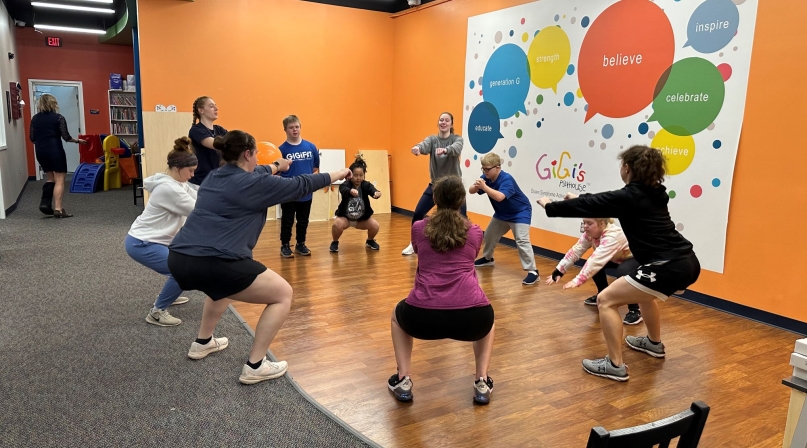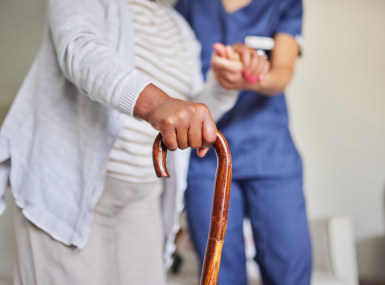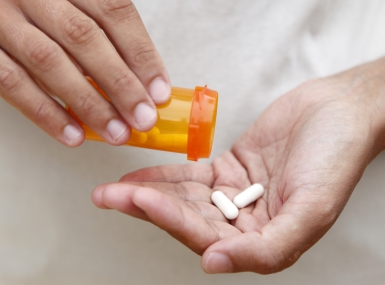New funding boosts Indiana county health departments

Key Takeaways
For 30 years of her career, Mindy Waldron felt like Allen County’s public health efforts, along with those of other counties in Indiana, were just treading water.
“We were just doing regulatory work and keeping our lights on,” she said. Waldron is the public health administrator for the county that includes Fort Wayne. “We knew what we were doing in statutory public health was primarily enforcement of rules and inspectional things and we weren’t in the preventive space.”
Meanwhile, the state’s life expectancy fell throughout the 2010s and was two years below the national average in 2019. The Hoosier State was near the bottom of public health funding, spending an average of $15 per resident.
“The funding that came from the state to the locals to do public health had been the same for 20 years — $7 million,” said Lindsay Weaver, Indiana’s state health commissioner.
“It really made it so that our local communities had to come up with the tax revenue if they wanted to actually invest in this space.”
In the last two years, the state has added $225 million in funding for public health through the Health First Indiana program, which allocated $75 million in the 2024 fiscal year and $150 million in 2025.
Three-quarters of that goes to core public health services with an eye toward prevention, including maternal and child health, chronic disease prevention and tobacco and vaping prevention and cessation and lead paint management.
Counties must provide 20% in matching funds.
“For some of our counties, it’s about close to what they had always been spending, and for some counties it’s a little bit less,” Weaver said.
Six counties declined the funding in 2024, but changed their minds for 2025, putting the state at 100% participation.
“There was some concern that if they accepted the state funding, that they’d be letting the state take over their health department, and that’s not the case at all,” Weaver said.
“I love this legislation because it really leaves it to the counties,” she said.
“Our counties that are off by Chicago look really different than our counties that are in our rural southern part of the state, closer to Kentucky,” she noted. “Resources are different, cultures are different, and we leave it up to counties to decide what they’ll do.
“We give them the resources and the data to decide what their priorities are and to address the leading causes [of bad health outcomes].”
Like many health initiatives, the impetus for Health First Indiana came during the COVID-19 pandemic, but indicators were alarming well before 2020.
“We just have poor health outcomes in the state of Indiana — high obesity rates, one of the higher infant mortality rates, maternal mortality rates,” Weaver said. “We needed to make a difference. That is really one of those spaces where the state should have a bigger role to help invest, because we need all of our counties to be healthy in order to have a healthy state.”
Waldron served on former Gov. Eric Holcomb’s public health commission in 2021-2022 and her optimism grew when she saw close to perfect attendance from commission members over the course of the year.
“A lot of times, you see that a commission is meeting on a topic to improve something; many times, there’s a report that comes out of it, but not a lot of action,” she said.
“Parts of this bill were verbatim what we wrote in the report, and what passed was historic for Indiana.”
While some of the money has helped Allen County supplement its internal public health operations, the fastest way to build capacity has been to fund the existing services provided by nonprofits.
After years of receiving grants for the county health department, Waldron now finds herself awarding them to local organizations to do much of the preventive work — $2.1 million to 29 organizations in 2024 and nearly $3 million for 43 organizations in 2025.
Those organizations have expanded mobile pediatric care services, offered support services and linkage to care for survivors of domestic violence, assisted with benefit enrollment navigation for people with disabilities and more.
Waldron said the organizations that Allen County funded in 2024 served 80,000 community members and renewed grants with many of the nonprofits, but she didn’t want to see any complacency.
“If we awarded you in ‘24 and we want to award you in ‘25, you’ve got to show us how your growth will happen,” she said. “We want to do more for more, not just maintain the status quo.”
Weaver likes seeing counties reach out to local providers to enhance preventive service delivery.
“I think this approach of using data, allowing it to be locally driven, really emphasizing partnerships at the local level, that the counties can’t be expected to do this work,” she said.
“They need to identify those partners,” she noted.
“Those are going to be the big success stories, and we will see health outcomes move down the way. But we also ask people to be patient, because it’s going to take time. But we’ll see things improve at the local level before we see them improve at the state level.”
David Bottorff, executive director of the Association of Indiana Counties, said the association cautioned counties against hiring new staff in favor of partnering with local organizations.
“That way, if the state does try to cut funding, the partners can show up and say, ‘This money was coming to us,’” he said.
Which may be what it takes to keep funding level. The state Legislature is working on its next biennial budget, and with two months to go, Health First Indiana is slated to receive $200 million, $25 million less than the last two years.
“It’s still better than what we had before,” Bottorff said.
Weaver noted that many counties enhanced their 2024 funding with American Rescue Plan Act money, knowing the 2025 funding would increase.
“A lot of reasons they were successful in the first year was because of that head start, but if we don’t sustain this funding, it’s all going to be for naught,” Weaver said.
“A huge investment one-time is not how you improve health outcomes.”
Related News

U.S. Department of Agriculture unveils $700 million for regenerative agriculture
On December 10, U.S. Secretary of Agriculture Brooke Rollins announced the launch of a $700 million pilot program to support regenerative agriculture practices across the country.

HHS releases rule repealing federal nursing home staffing mandate, supporting county long term care facilities
On December 2, the U.S. Department of Health and Human Services (HHS) published an interim final rule that repeals the federal nursing home staffing mandate, a regulation that would have required long-term care facilities to meet strict minimum staffing levels.

Congress passes SUPPORT Act reauthorization
On September 18, the U.S. Senate passed the SUPPORT for Patients and Communities Reauthorization Act of 2025 (SUPPORT Act Reauthorization) (H.R. 2483) by voice vote, following House passage earlier this year. With strong bipartisan backing in both chambers, the legislation now heads to the President’s desk for signature.
Webinar
The Benefits to Counties: Public Health Department Accreditation
Strong public health departments engaged in effective community partnerships make all communities healthier places to live, work, learn, and play. Aiming to better serve their communities, hundreds of local public health departments across the nation have achieved accreditation through the Public Health Accreditation Board’s national accrediting program. On this webinar, Public Health Accreditation Board leadership will review the numerous benefits of accreditation and county leaders from Ramsey County, Minn., and Idaho North Central Public Health District will share insights on their counties’ journeys toward achieving accreditation.


